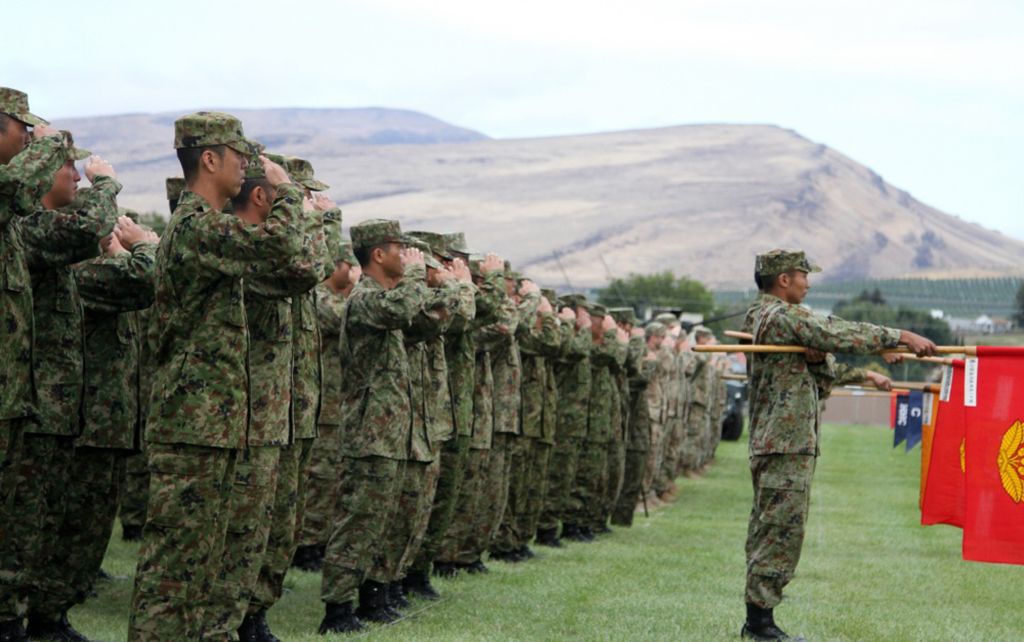Overseas training is helping groom Army units in the Pacific theater for future missions that may require cross-domain tactics to defeat enemies, according to senior leaders.
One set of exercises, Pacific Pathways, has allowed Army units to broaden their training as they deploy across the region for bilateral and multilateral drills with foreign militaries, while working with their sister services.
“We’re moving toward joint integration where we get out of our service stovepipes and look at all of the domains … to present multiple dilemmas to an adversary,” Gen. Robert Brown, commander of U.S. Army Pacific, said while speaking at a panel discussion at the Association of the U.S. Army Annual Meeting and Exhibition Oct. 5.
Things can get complicated, though, in a theater that covers over half the globe, with some of the world’s most populous countries and largest armies. There are also hostile adversaries like North Korea testing nuclear weapons, extremist groups spreading terror tactics, and China and Russia pushing their influence into the region.
To counter future threats, the Army recently introduced a multi-domain battle concept that aims to give Soldiers the ability to adapt and present several challenges to enemies from land, sea, air and cyber.
Brown said that a multi-domain task force is currently being planned to maneuver land assets that could impact other domains in the region.
“It’s clearly the way of the future,” he said. “It can be very difficult for an enemy to handle multiple domains, and at the same time, it presents multiple options to our commanders and our national command authorities.”
Army multi-domain operations would hinge on a united front with the other services and their Pacific allies, according to the general.
“It would deter anybody from being stupid enough to try something against us,” Brown said of the new concept. “They would be defeated because of our efforts and our joint integration that we can do that no one else can do.”
The concept would eventually require massive upgrades to U.S. military systems in order to share information to all partners involved.
“We didn’t grow up integrated the way we should be,” Brown said. “We have systems that can’t talk to each other within our own services, let alone between services themselves. It’s not an easy thing to accomplish.”
To help close gaps in today’s partnerships, Army leaders kicked off Pacific Pathways in 2014, a three-part training event where a brigade-level unit and its equipment travels by sea and air to three countries back to back to join in large-scale exercises.
Training a combat-ready unit in another country not only improves multinational interoperability, officials said, it also opens up the doors to other nations while showcasing the Army’s strength to potential foes.
“If you want to enhance access, and if you want to provide reassurance to our partners and allies, having that forward presence during an operation is extremely important,” Lt. Gen. Stephen Lanza, commander of I Corps, said during the discussion.
This year, three Pacific Pathway rotations are being carried out. Joint Base Lewis-McChord in Washington, which Lanza also commands, had two Stryker BCTs take part in rotations in five different countries earlier this year.
In the three-month rotations, Lanza said Soldiers stretched their training by working with Marines, special operators, and cyber experts, and they honed their skills on ballistic missile defense and aviation assets, including the RQ-11 Raven, a small hand-launched unmanned aerial vehicle.
“We probably get more Raven training on a Pathway than we get at home station,” he said, adding that there’s also training on other UAVs, such as the RQ-7 Shadow and MQ-1C Gray Eagle.
As the exercises continue to build up, he said, more countries have expressed interest in taking part in them.
“Pathways have been instrumental in doing that,” Lanza said of enhancing multinational relationships. “It’s brought other countries into the discussions of where they can embed.”
In upcoming Pathway exercises, Army leaders plan to expand the role of reserve-component forces to increase their readiness. In the past year, at least 70 Guard and Reserve units with about 4,200 Soldiers have been integrated into I Corps’ missions, Lanza said.
“That’s a significant number when you look at total force and you look at how many different elements and units are embedded in the operations of the exercises that we run with USARPAC,” he said.
The nature of Pacific Pathways, in which units deploy as if they’re heading to combat, also allows Soldiers to train in settings similar to those that they may someday find themselves in, responding to conflicts, according to Brown.
“We do enjoy a higher level of readiness in the Pacific than across the rest of the Army, and we should,” Brown said of the region’s potential threats. “We have to be ready to fight tonight.”










